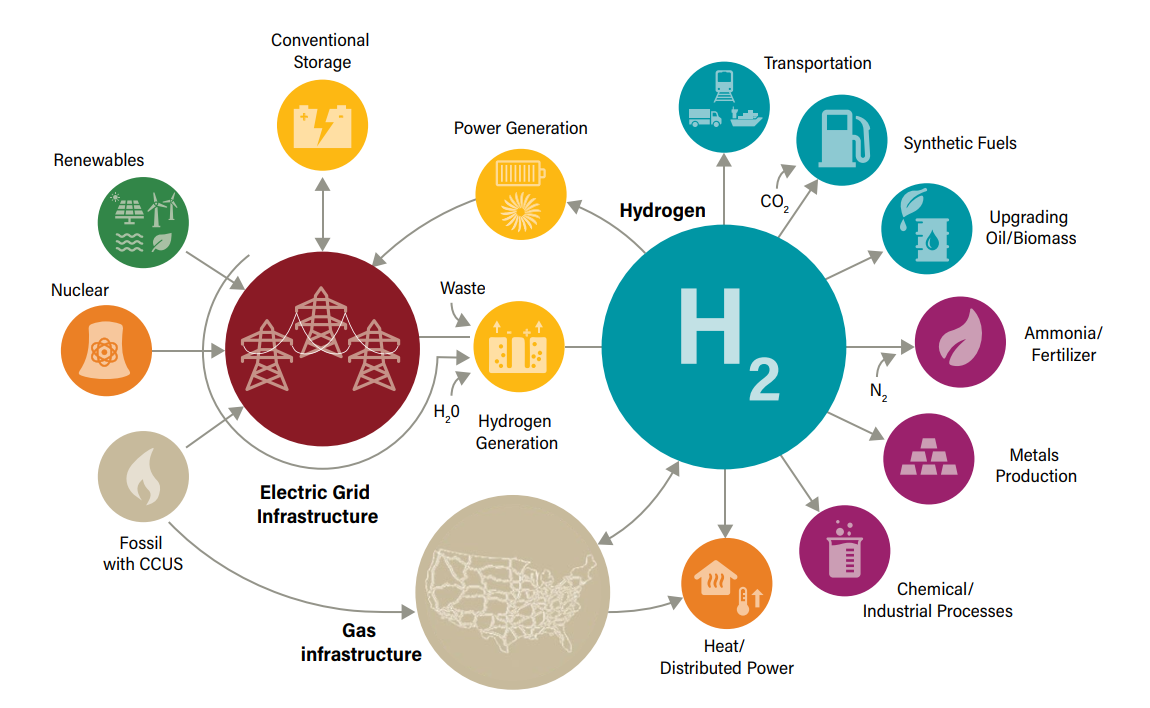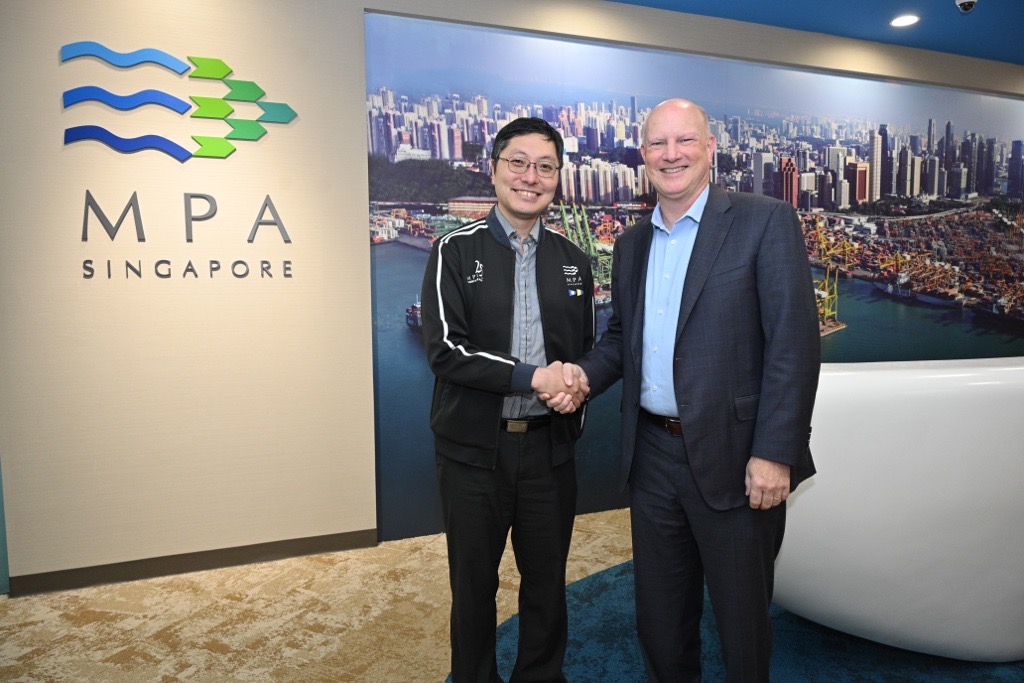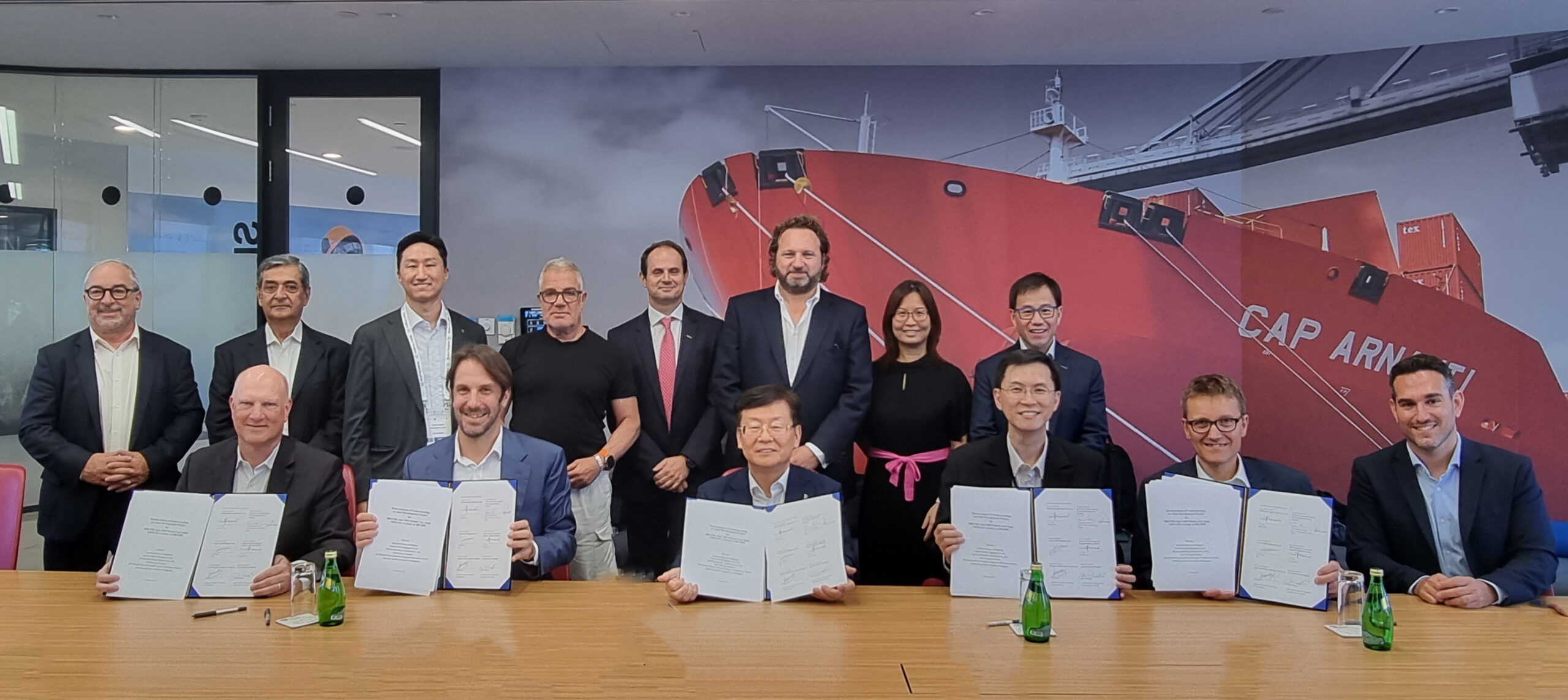Shipping will need to foster closer ties with other industrial users and providers of green molecules to secure the low-emissions fuels it needs.
Beyond the traditional stakeholders of cargo owners, ports and regulators, shipping in the future will need to collaborate closely with a range of companies – from steel and cement producers to district heating providers – to ensure access to the energy it needs.
Collaboration will be needed because the resources on which decarbonised industry will rely are scarce. Whether your company plans to power vessels with direct renewable electricity, biofuels or e-fuels, there will likely be limits on availability, leading to competition and higher prices. For a price sensitive industry like shipping that has until today relied on using the cheapest fuels possible, that is a paradigm shift.
A recent working paper on the outlook for clean hydrogen from the World Resources Institute, global research organization studying environmental and development challenges, highlights the scarcity challenge. “Competing demand from the industrial and energy sectors will impose limitations on hydrogen’s use as a fuel and fuel feedstock in freight transportation,” the report notes, observing that industrial demand in the chemicals and steel industries alone has the potential to absorb projected clean hydrogen supply for decades.
One way to avoid the upward spiral of costs is to manage resources and resource policies better. Dr Marin Tunér, Professor of Combustion Engines at Lund University in Sweden, has spent his career challenging counter-productive energy policies, most recently the German government’s proposal to ban engine-driven automobiles by 2035, which would have dramatically increased the lifecycle emissions of road transport. The production of electric vehicles requires huge amounts of raw materials from mining while those cars would also, in the short-term at least, be relying on electricity from mainly fossil sources.
“We need to work together to manage resources responsibly,” said Tunér. “That’s the only way to make sure that, when we’re trying to solve problems, we’re not actually just creating bigger problems.”
Hydrogen ecosystems
Integration and coordination between industrial sectors could help. In these ecosystems, fuel choices for ships are just one part of a complex network of energy needs. For Florian Gruschwitz and Gunnar Stiesch of MAN Energy Solutions, the first step is a holistic perspective of the four industries that together account for more than 90% of the world’s greenhouse gas emissions: power and heat generation, transport, industry (including cement, chemical and steel production as well as industrial heat and steam generation) and buildings.
Renewable electricity and fuels derived from it can dramatically reduce emissions in all these sectors. But understanding which sector and application can make best use of which green power source is fundamental. Based on the amount of processing needed to deliver power – the more processing, the more energy is wasted on fuel production – a straightforward selection process runs from direct use of renewable electricity, on to use of green hydrogen produced from electricity, then use of fuels derived from green hydrogen (such as green methanol or ammonia), and finally carbon capture where replacing fossil fuels is the most challenging.
The authors cite a study of hydrogen supply to a steel plant in Germany, where options include hydrogen supplied by pipeline from either onshore or offshore wind power, or hydrogen converted from methane, methanol or ammonia transported by ship from North Africa. While domestic energy is always cheaper, the analysis of hydrogen media imported by ship shows some interesting results that will come to bear on import markets, and fuel choices for both industry and shipping.

“Ammonia is the cheapest option. Despite the fact that the cost of Haber-Bosch process is higher, there is no CO2 recirculation necessary and the cost of reconversion is comparatively low. The cost of CO2 recirculation makes the methanol or methane route slightly more costly in this scenario.”
As domestic energy will always be in high demand – therefore likely scarce and highly priced – seaborne import of energy is likely to be involved at many large industrial projects. And based on the German steel plant study, ammonia could become a favoured hydrogen media – and potentially a more available shipping fuel.
E-fuels as a byproduct
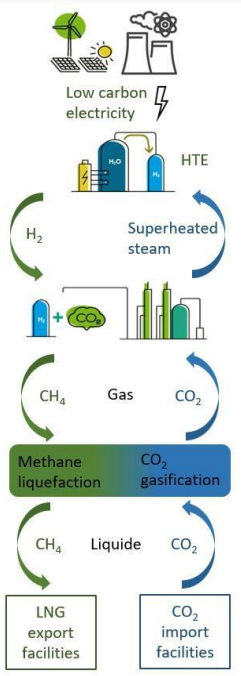
Even where there is no necessary import trade, a hydrogen economy can support e-fuel availability for ships. This was highlighted in an integrated hydrogen economy model proposed by Wärtsilä’s Kenneth Widdell, who outlined the H-Flex-E project under consideration in the company’s home town of Vasa in Finland.
The core concept is one that will likely become a familiar part of projects powered by renewable electricity: balancing. With intermittent power generation from wind or solar energy causing spikes in electricity prices when production is low, it could make sense to store surplus energy as hydrogen, which can then be used as a cheaper option when prices are high. Alternatively, the surplus hydrogen could be sold to shipping customers, either directly or after conversion to an e-fuel, if it makes economic sense to do so, when electricity prices are low.
Another version of a symbiotic relationship between shipping and industry was presented by Philippe Renaud of CMA CGM. Exploring the option of decarbonising the group’s LNG-fuelled vessels via onboard carbon capture, Renaud illustrated how captured carbon could be fed back into the synthetic LNG production process. Earlier in the presentation he hinted at a similar circularity for biofuel production. “Note that we transport both the initial product, and waste from that product,” he said.
However, there are multiple challenges in this approach, Renaud admitted. Those include developing the shoreside infrastructure, regulatory uncertainty blocking investment and technology maturity of both carbon capture and high-efficiency methanation processes. Similar obstacles confront all e-fuels.
Renaud’s conclusion harked back to Tunér’s keynote speech on the way towards responsible, integrated management of resources, and how shipping’s fuel options will be determined in a hydrogen economy. He said: “Sustainable Development Goal 17 [ed – the last of the UN’s 17 SDGs], partnerships for the goals, is probably the one that we must achieve first.”
Related stories


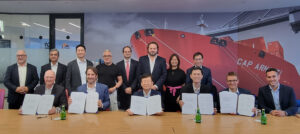
ABS joins landmark project for dual-fuel Ammonia carrier
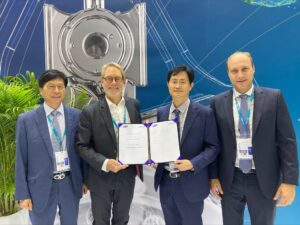
WinGD and Samsung Heavy Industries to cooperate on future fuel applications
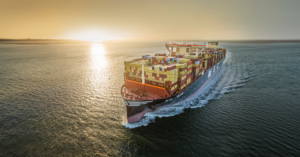
MSC joins SEA-LNG as latest coalition member
























